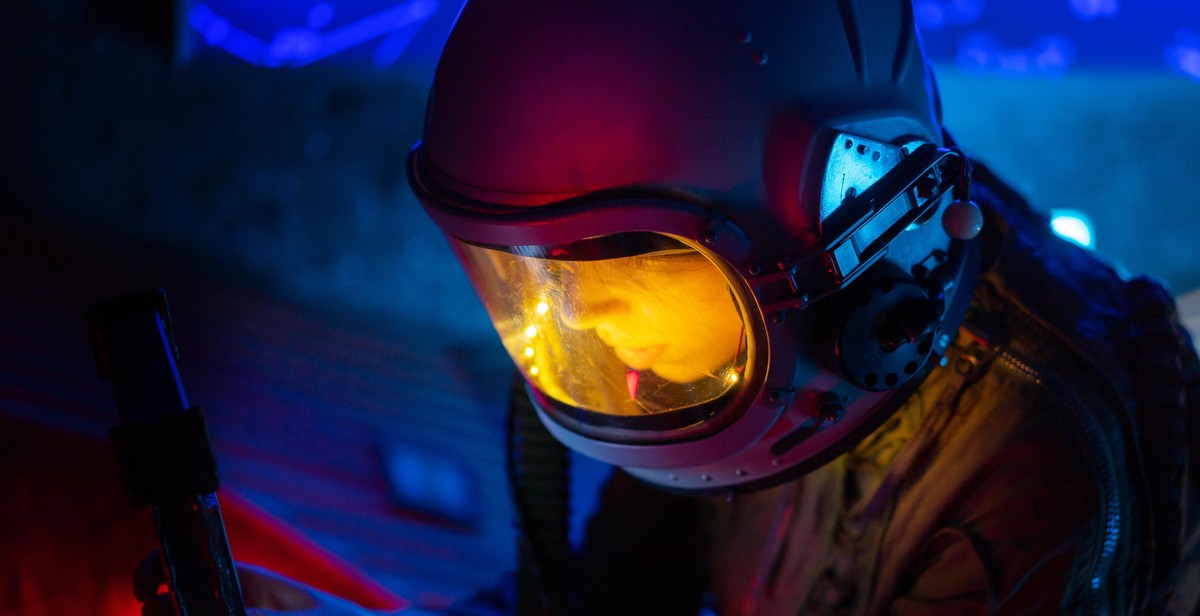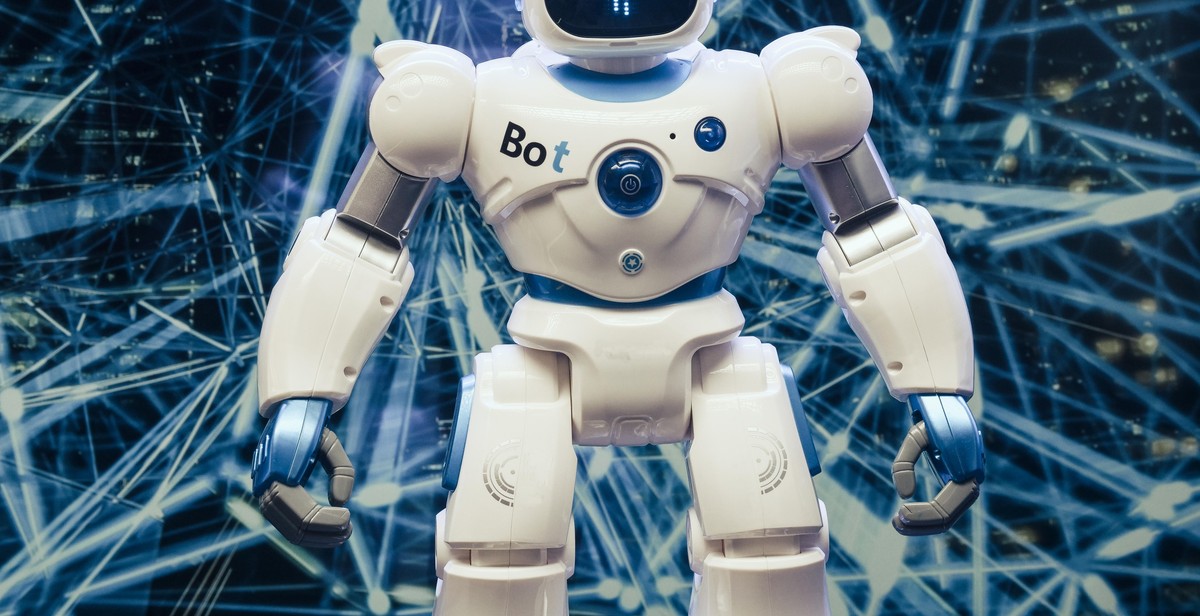The Future of Robotics in Space Exploration: From Rovers to Humanoid Robots
In recent years, space exploration has witnessed remarkable advancements in the field of robotics. From the humble rovers that paved the way for scientific discoveries on Mars to the emergence of humanoid robots capable of performing complex tasks, the future of robotics in space is filled with endless possibilities.
1. Rovers: Unleashing the Power of Exploration
Robotic rovers have been at the forefront of space exploration for decades. These autonomous vehicles have revolutionized our understanding of celestial bodies, such as Mars, by collecting valuable data and imagery. The success of missions like NASA’s Mars rovers, Spirit and Opportunity, has paved the way for more advanced rovers like Curiosity and Perseverance.
2. Drones: Expanding Our Reach
Unmanned aerial vehicles, or drones, are becoming increasingly important in space exploration. These agile machines can navigate environments that are inaccessible to rovers, providing a new perspective on celestial bodies. Drones like NASA’s Dragonfly, set to explore Saturn’s moon Titan, will enable scientists to gather data from multiple locations, enhancing our understanding of extraterrestrial environments.
3. Humanoid Robots: The Next Frontier
Advancements in robotics have led to the development of humanoid robots, which can perform tasks that were once exclusive to humans. These robots, equipped with advanced sensors and artificial intelligence, are being designed to assist astronauts during space missions. Examples include NASA’s Robonaut and the European Space Agency’s Justin, which demonstrate the potential for robots to work alongside humans in space exploration.
As we venture further into the cosmos, the future of robotics in space exploration holds immense promise. From rovers that uncover the secrets of distant planets to humanoid robots that assist astronauts on their missions, these technological marvels are shaping the way we explore and understand the universe.
The Evolution of Robotics in Space Exploration
Early Robotic Missions
Space exploration has come a long way since the early days of manned missions. In the early stages of space exploration, robotic missions played a crucial role in gathering data and exploring the unknown. The first robotic missions, such as the Soviet Union’s Luna program and the United States’ Ranger program, aimed to capture images of the Moon’s surface and gather valuable scientific data. These missions laid the foundation for future advancements in robotic technology.
Advancements in Robotic Technology
With rapid technological advancements, the capabilities of robotic systems in space exploration have expanded exponentially. Robots have evolved from simple rovers to highly sophisticated machines capable of performing complex tasks. The introduction of artificial intelligence and machine learning algorithms has enabled robots to operate autonomously, making decisions in real-time based on the information they gather. These advancements have increased the efficiency and reliability of robotic missions, reducing the need for human intervention in hazardous environments.
One notable advancement is the development of humanoid robots. These robots, designed to resemble humans in appearance and movement, have the potential to perform tasks that were previously only possible for astronauts. Humanoid robots, such as NASA’s Robonaut and JAXA’s Kirobo, are equipped with advanced sensors and dexterous manipulators, allowing them to assist in complex tasks like maintenance and repairs. This development paves the way for future human-robot collaborations in space exploration.
Current Robotic Missions
Today, robotic missions continue to play a crucial role in space exploration. The Mars rovers, including NASA’s Curiosity and Perseverance, have revolutionized our understanding of the Red Planet. These rovers are equipped with advanced scientific instruments, allowing them to analyze soil samples and search for signs of past or present life. Additionally, robotic missions like the International Space Station’s Canadarm2 and Dextre have been instrumental in assembling and maintaining the station, reducing the need for risky spacewalks.
Furthermore, private companies like SpaceX and Blue Origin are investing in robotic technologies to support their ambitious plans for space exploration. These companies are developing autonomous spacecraft capable of delivering payloads and conducting experiments in space, further expanding the role of robotics in space exploration.

The Role of Rovers in Space Exploration
Exploring the Martian Surface has been a long-standing goal of space exploration, and rovers have played a crucial role in achieving this objective. These unmanned robotic vehicles have revolutionized our understanding of Mars and paved the way for future human exploration. With their advanced capabilities and key features, Mars rovers have successfully carried out numerous missions, providing valuable data and insights.
Key Features of Mars Rovers
Mars rovers are designed to withstand the harsh conditions of the Martian surface and carry out scientific investigations. These robotic explorers are equipped with a range of key features that enable them to navigate, analyze the environment, and transmit data back to Earth.
- Mobility: Rovers are equipped with wheels or tracks that allow them to traverse the rocky terrain of Mars. They have the ability to climb steep slopes, cross sand dunes, and maneuver around obstacles.
- Instruments: Rovers are equipped with a suite of scientific instruments, including cameras, spectrometers, and drills. These instruments allow them to analyze the composition of rocks and soil, search for signs of past or present life, and study the Martian atmosphere.
- Power Systems: Rovers rely on solar panels to generate electricity. These panels capture sunlight and convert it into energy, which is stored in batteries for use during periods of low sunlight.
- Communication: Rovers use antennas to communicate with Earth. They transmit data and images back to scientists, who analyze the information and make decisions about the rover’s activities.
Successful Rover Missions
Over the years, several Mars rover missions have achieved remarkable success. The Sojourner, part of NASA’s Mars Pathfinder mission, was the first successful rover to explore the Martian surface in 1997. It provided valuable data on the geology and composition of rocks.
The Opportunity and Spirit rovers, part of NASA’s Mars Exploration Rover mission, landed on Mars in 2004. These rovers operated for years, surpassing their initial mission duration and greatly expanding our knowledge of the planet. They discovered evidence of past water activity and contributed to the understanding of Martian geology.
The most recent success story is the Curiosity rover, which landed on Mars in 2012 as part of NASA’s Mars Science Laboratory mission. Curiosity’s advanced instruments have provided crucial data about the planet’s habitability and potential for past microbial life.
These successful rover missions have demonstrated the importance of robotic exploration in space. Rovers have proven to be invaluable tools for gathering data, conducting experiments, and paving the way for future human missions to Mars.

Advancements in Humanoid Robots for Space Missions
Humanoid robots have emerged as a promising solution for space exploration, offering the potential to perform complex tasks in environments that are too hazardous or inaccessible for humans. However, these advanced robots face numerous challenges when deployed in space missions.
Challenges of Humanoid Robots in Space
Operating humanoid robots in space poses several technical and operational challenges. One of the main challenges is the need to design robots that can withstand extreme temperatures, radiation, and the vacuum of space. Additionally, humanoid robots must be able to navigate and operate in low-gravity environments, which requires advanced mobility and balancing capabilities.
Another significant challenge is the development of robust communication systems that can enable seamless interaction between robots and astronauts or ground control. Reliable and efficient communication is crucial for executing complex tasks and ensuring the safety of both humans and robots in space.
Applications of Humanoid Robots in Space Exploration
Humanoid robots have the potential to revolutionize space exploration by performing a wide range of tasks that were previously limited to humans. These robots can be deployed for extravehicular activities, such as repairing and maintaining spacecraft, conducting scientific experiments, and exploring distant planetary surfaces.
Furthermore, humanoid robots can assist astronauts in their daily tasks, reducing their workload and enhancing their productivity. They can also be utilized for hazardous activities, such as handling volatile materials or investigating dangerous environments, without risking human lives.
Current Humanoid Robot Projects
Several ongoing projects are focused on developing humanoid robots specifically designed for space missions. One notable project is NASA’s Robonaut, a humanoid robot designed to work alongside astronauts on the International Space Station (ISS). Robonaut is equipped with dexterous hands, allowing it to perform intricate tasks and assist astronauts during spacewalks.
Another significant project is the Japan Aerospace Exploration Agency’s (JAXA) Humanoid Robot “Kirobo,” which was sent to the ISS in 2013. Kirobo was designed to interact and communicate with astronauts, providing companionship during their long-duration space missions.
Additionally, private companies like SpaceX and Blue Origin are investing in the development of humanoid robots for space exploration. These companies aim to create robots capable of autonomously performing tasks on space habitats or future lunar and Martian bases.
Despite the challenges, advancements in humanoid robot technology continue to push the boundaries of space exploration. As these robots become more capable, they will play a vital role in expanding our understanding of the universe and paving the way for future human missions beyond Earth.

The Future of Robotics in Space Exploration
The field of space exploration has witnessed remarkable advancements in recent years, with robotics playing a crucial role in expanding our understanding of the universe. The integration of robotics and artificial intelligence has paved the way for new possibilities and has transformed the way we explore space.
Integration of Robotics and Artificial Intelligence
Robots equipped with artificial intelligence (AI) have revolutionized space exploration. These intelligent machines possess the ability to analyze vast amounts of data and make informed decisions in real-time. By integrating AI into robotic systems, we can enhance their autonomy, adaptability, and problem-solving capabilities.
Autonomous Robotic Systems
Autonomous robots are becoming increasingly prevalent in space missions. These robots can perform tasks without direct human intervention, enabling them to navigate and explore challenging terrains on distant celestial bodies. These systems are equipped with advanced sensors, allowing them to perceive their surroundings and make decisions accordingly.
Collaboration between Human Astronauts and Robots
The future of space exploration lies in the collaboration between human astronauts and robots. Robots can assist astronauts in performing hazardous tasks, such as extravehicular activities or exploring environments with extreme temperatures or radiation levels. Furthermore, robots can be deployed in advance to set up habitats and gather essential resources, ensuring the safety and efficiency of human missions.
Potential Benefits and Limitations
The integration of robotics in space exploration offers numerous benefits. Robots can operate in environments that are inhospitable to humans, reducing the risks associated with manned missions. They can also work tirelessly for extended periods, collecting valuable data and conducting experiments. Additionally, robotic missions are more cost-effective compared to manned missions.
However, there are limitations to robotic space exploration. The lack of human presence restricts the ability to adapt to unforeseen circumstances and make complex decisions. Communication delays and limited dexterity of robots also pose challenges in performing intricate tasks.
In conclusion, the future of space exploration lies in the seamless integration of robotics and artificial intelligence. Autonomous robotic systems, when combined with human astronauts, will unlock new frontiers and enable us to delve deeper into the mysteries of the universe.
Conclusion
In conclusion, the future of robotics in space exploration is undeniably promising. From the humble rovers that have paved the way for our understanding of other planets to the advanced humanoid robots that may one day accompany humans on interplanetary missions, the potential for robotics in space is vast.
The development of autonomous robots, equipped with advanced AI and machine learning capabilities, will enable us to gather more data and explore further into the depths of our solar system and beyond. These robots will be able to perform complex tasks and make decisions on their own, reducing the need for human intervention in hazardous environments.
Furthermore, the use of humanoid robots in space exploration holds great potential for future missions. These robots, designed to mimic human movements and capabilities, can assist astronauts in carrying out tasks, conducting experiments, and even providing companionship during long-duration space missions.
It is evident that the advancements in robotics technology will revolutionize space exploration and push the boundaries of what is possible. With ongoing research and development, we can expect to witness even more sophisticated robots in the near future, capable of tackling the challenges of space exploration with ease.
As we continue to explore the vast expanse of space, robotics will play a crucial role in our quest for knowledge and understanding. The collaboration between humans and robots will enable us to reach new heights and uncover the mysteries that lie beyond our home planet.
Overall, the future of robotics in space exploration is an exciting prospect, and we can look forward to witnessing incredible advancements in the field in the years to come.
